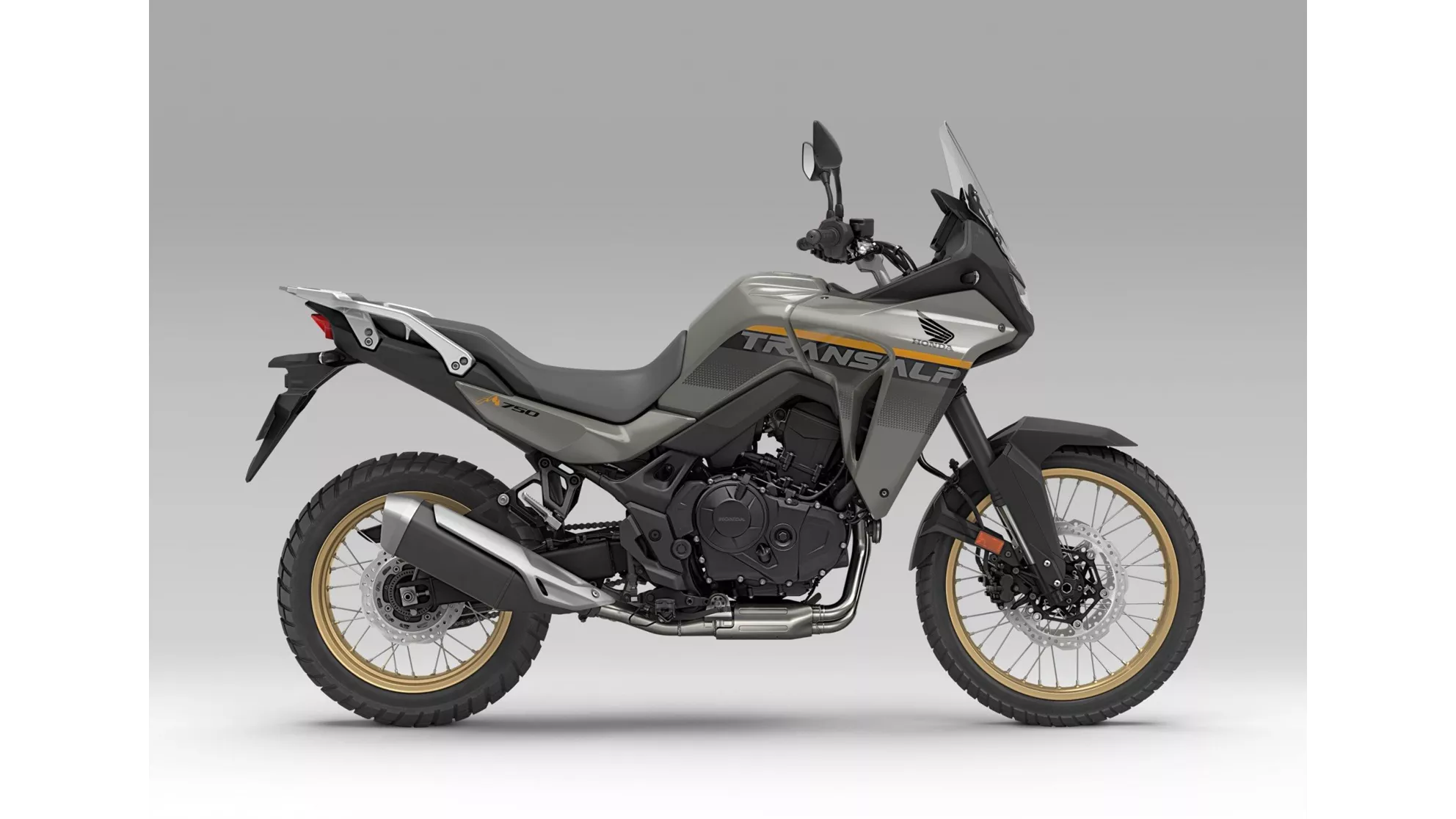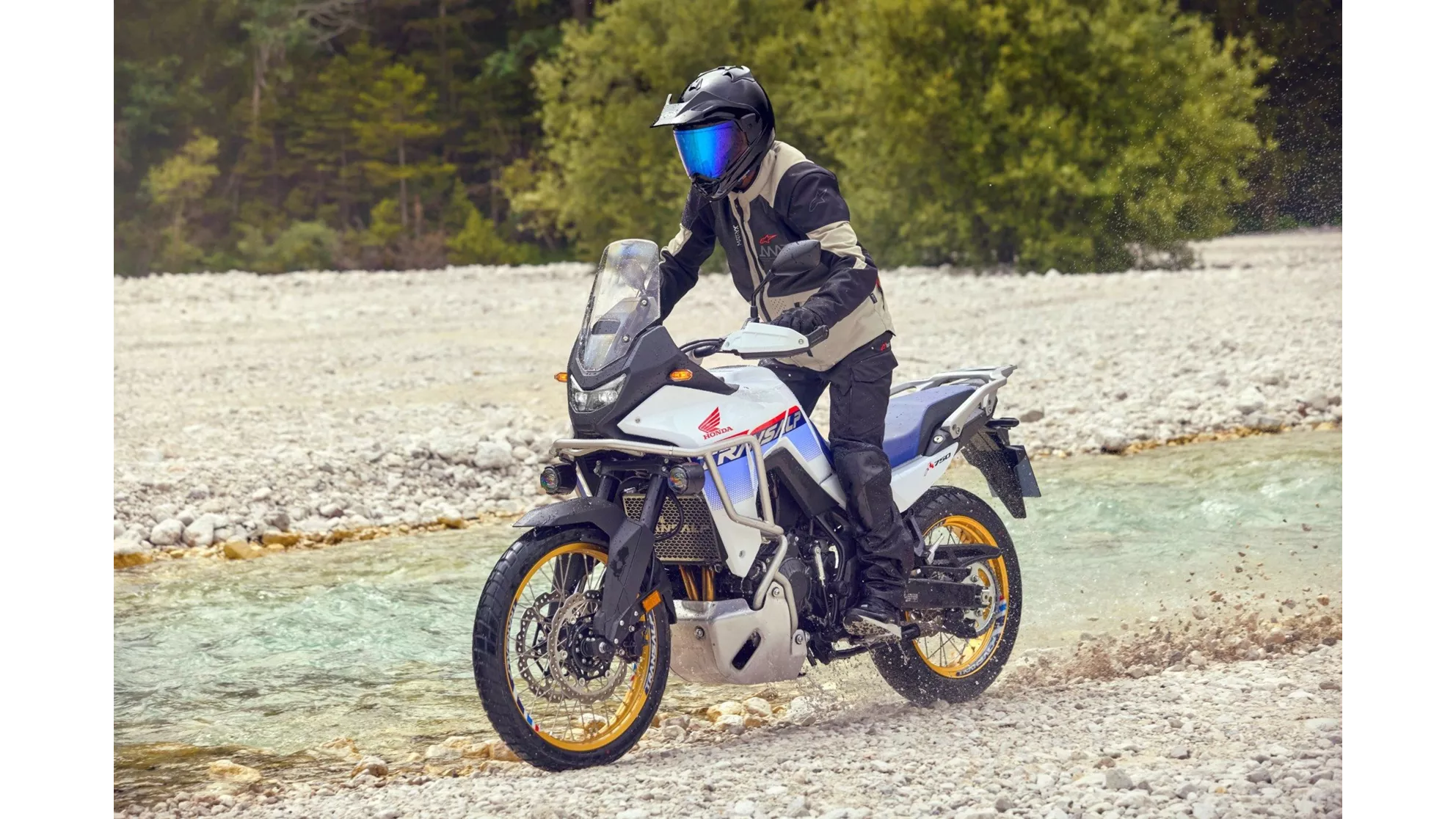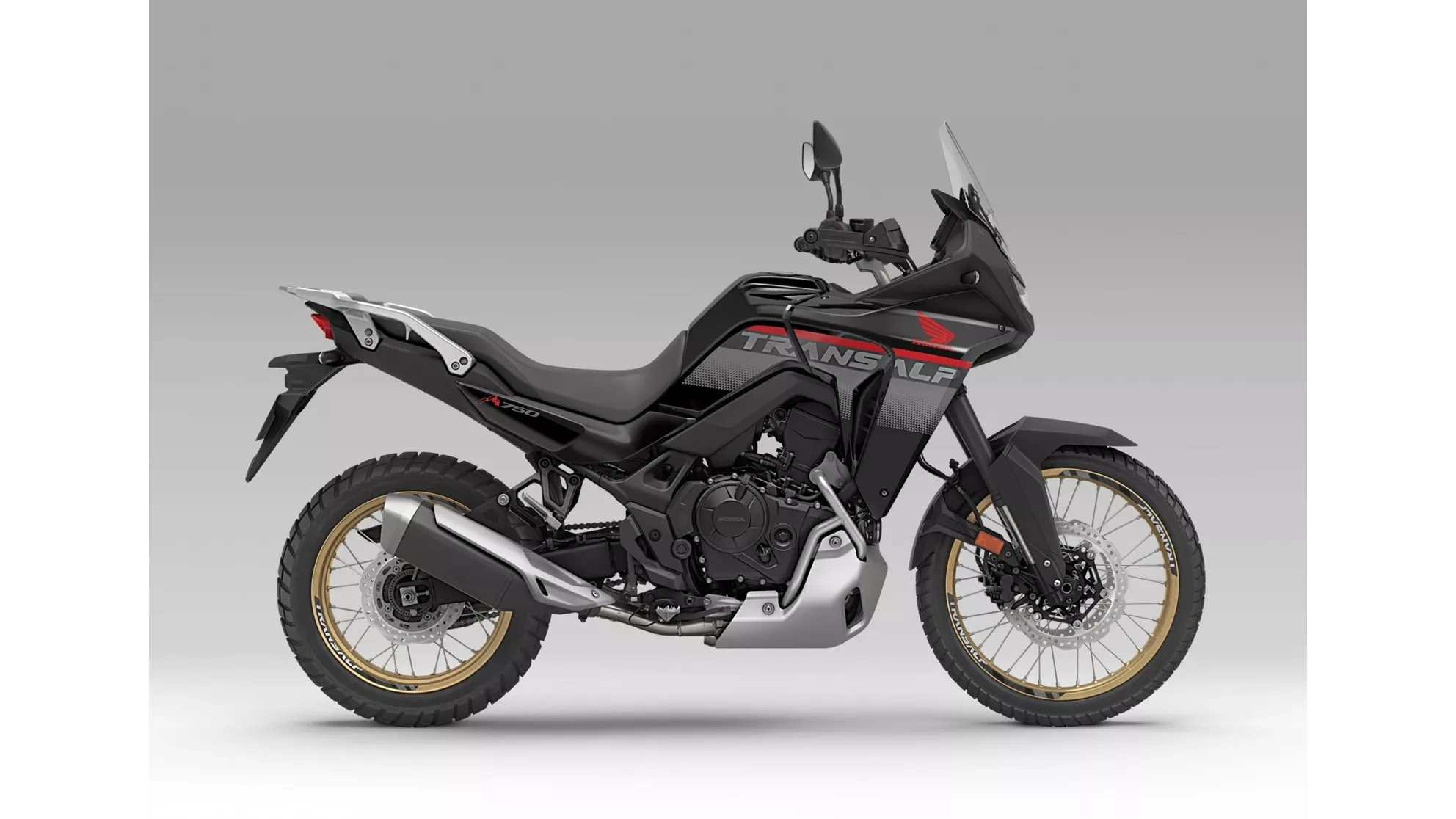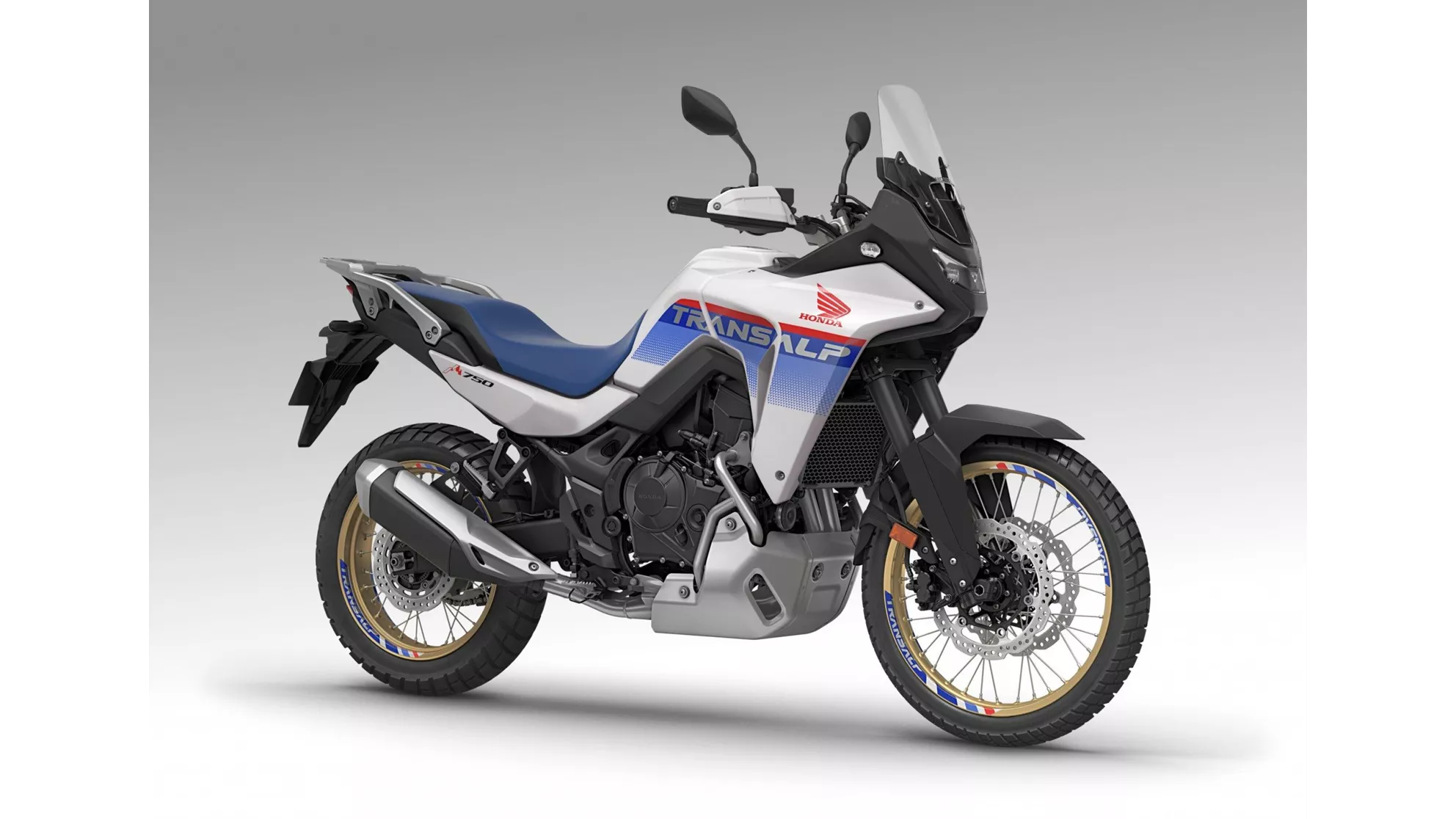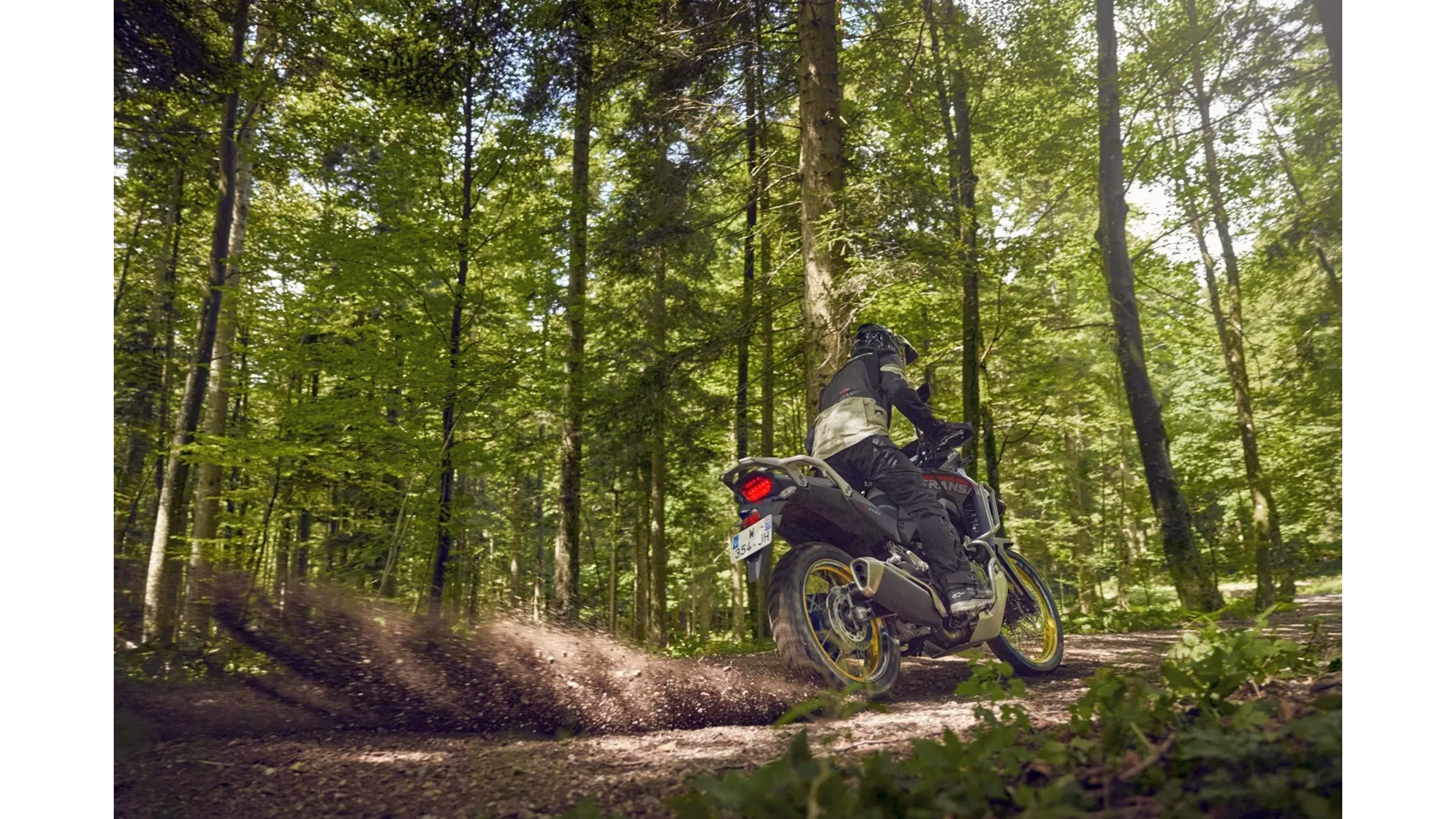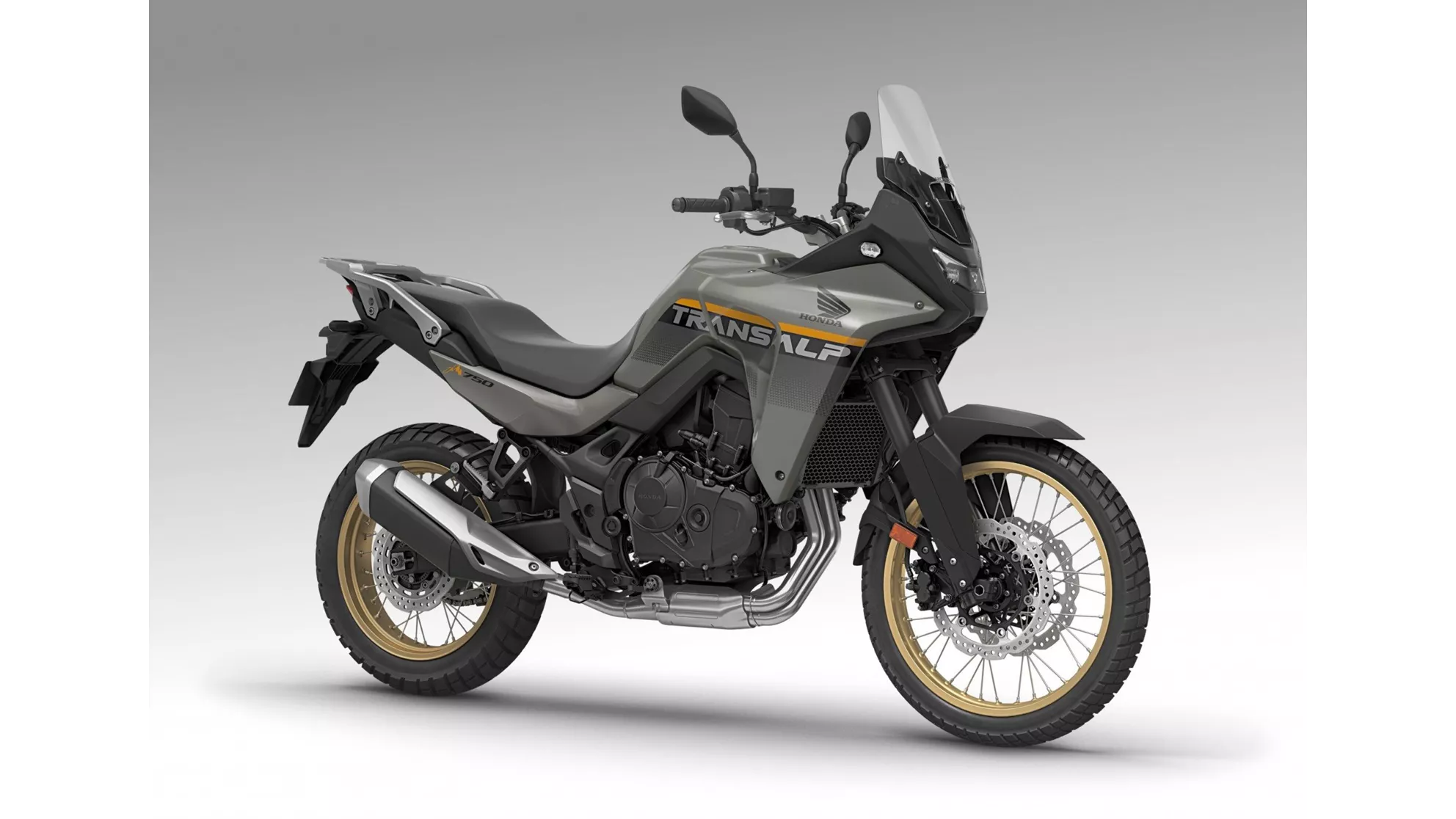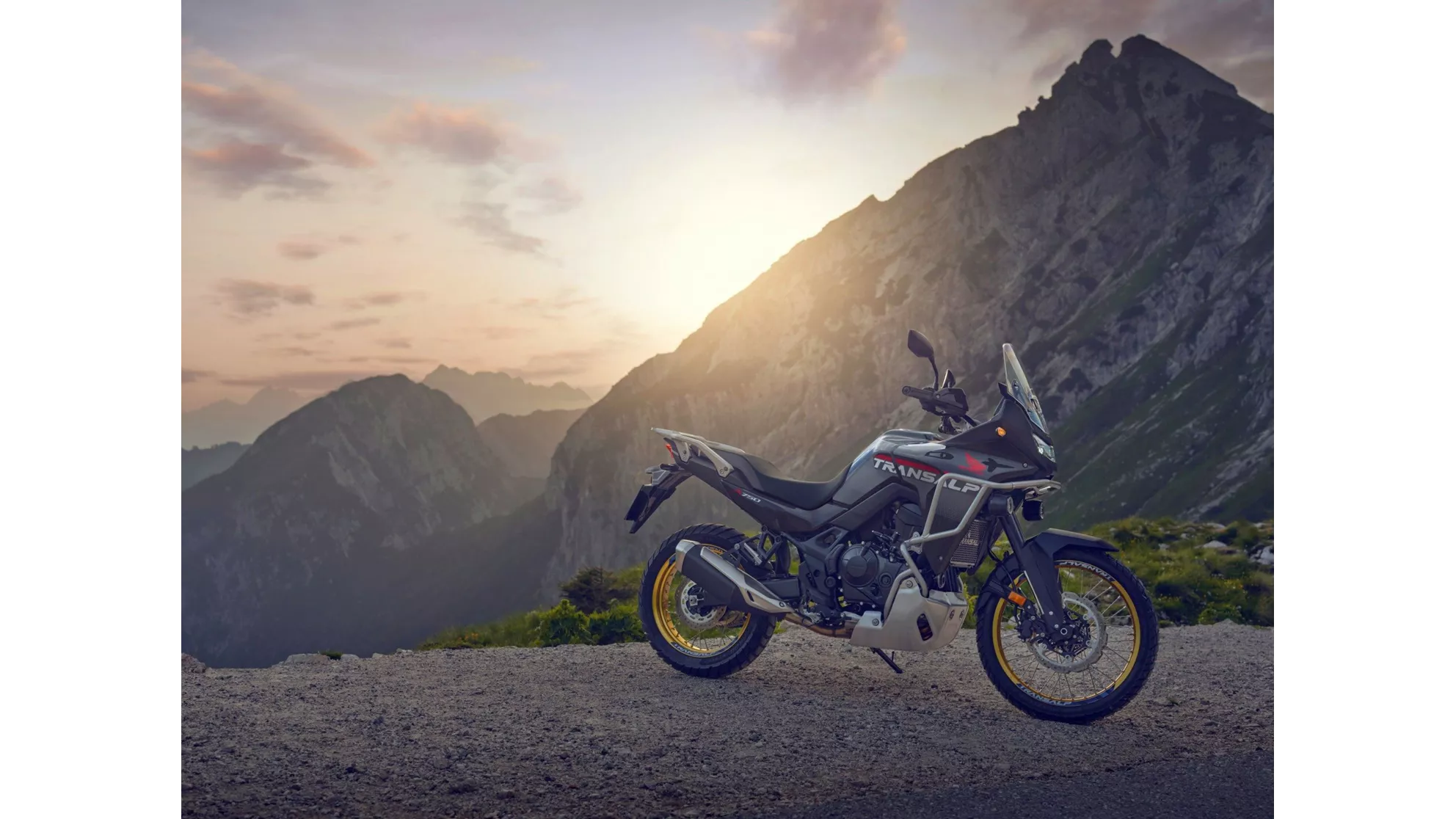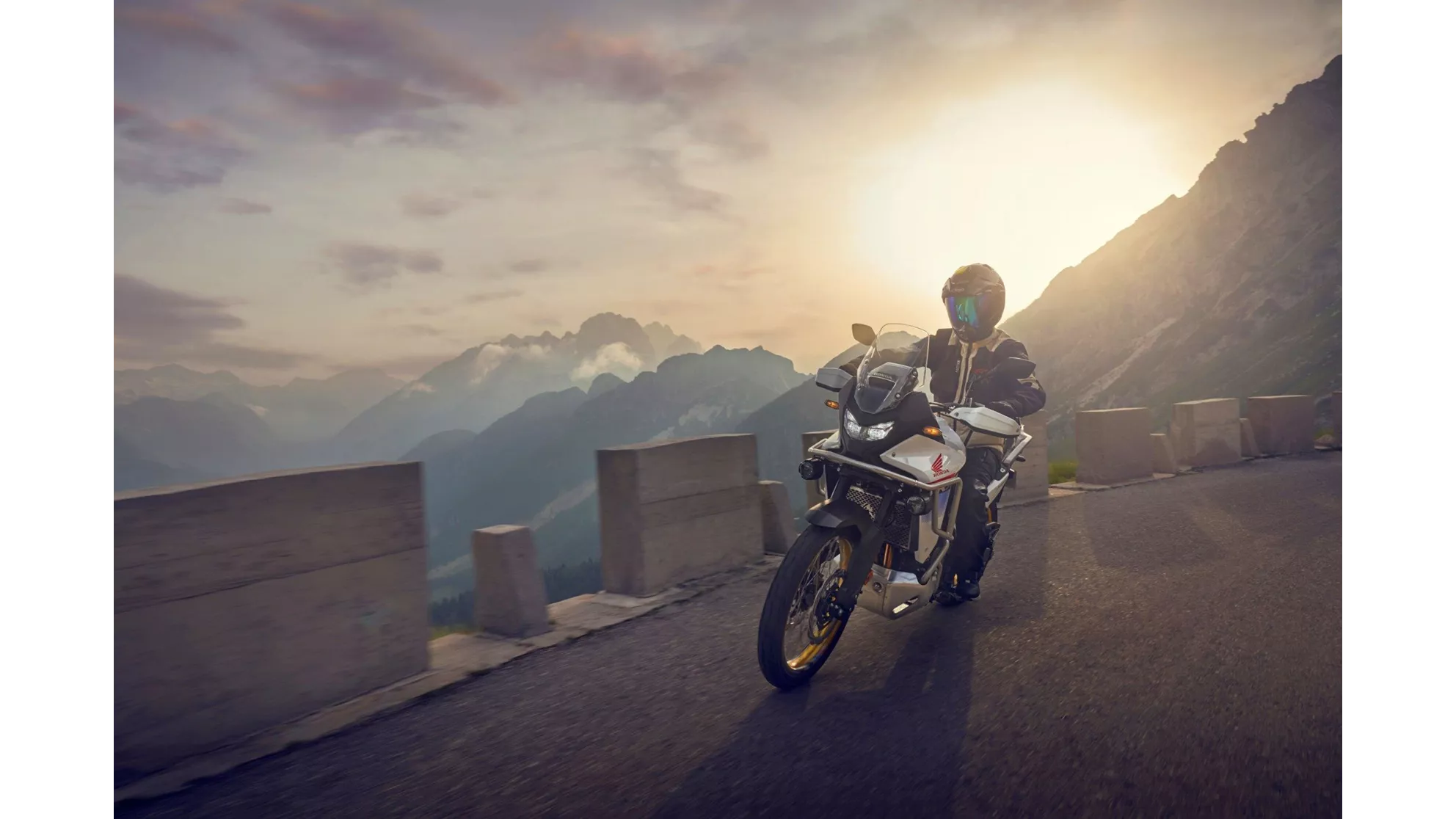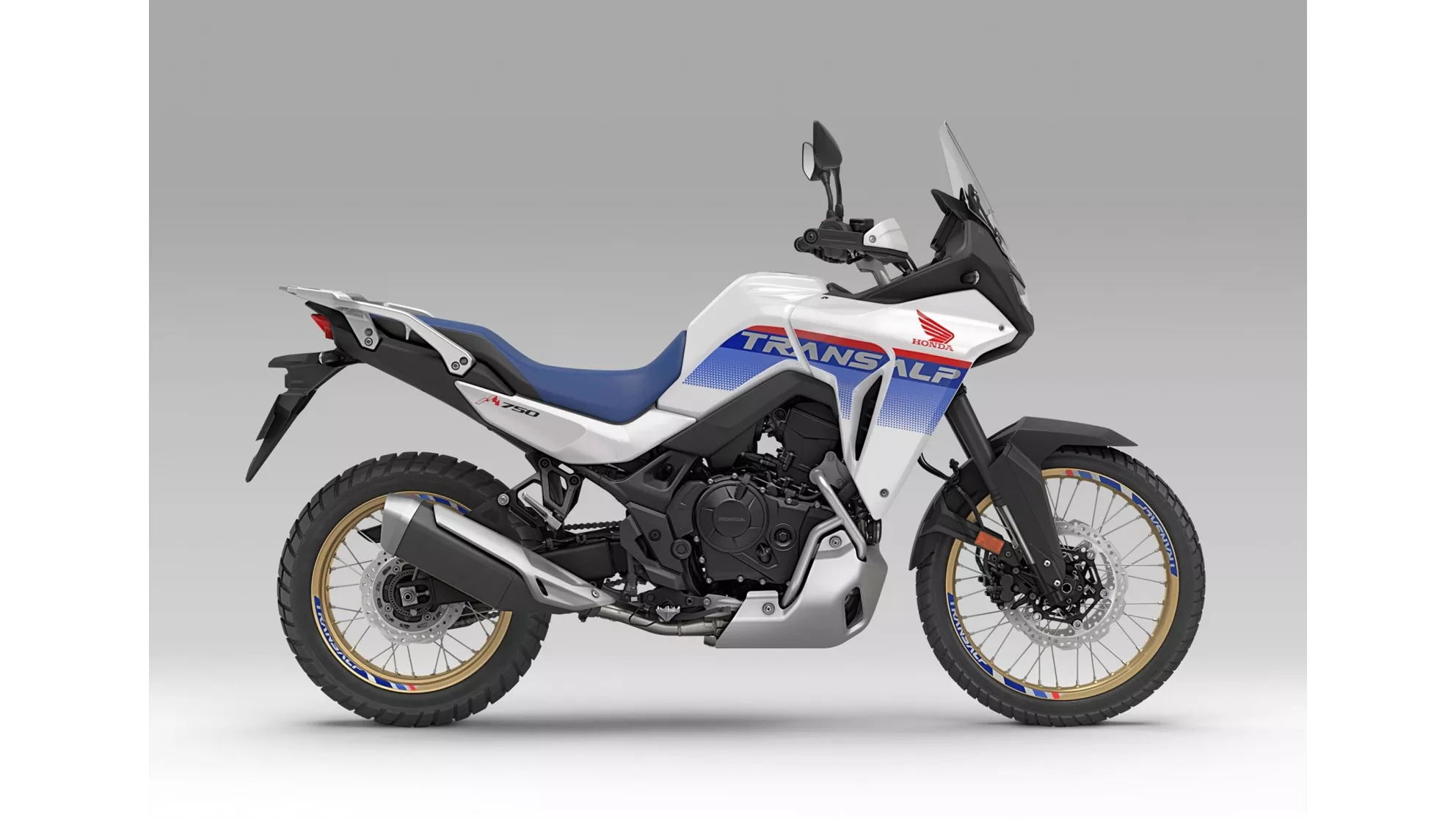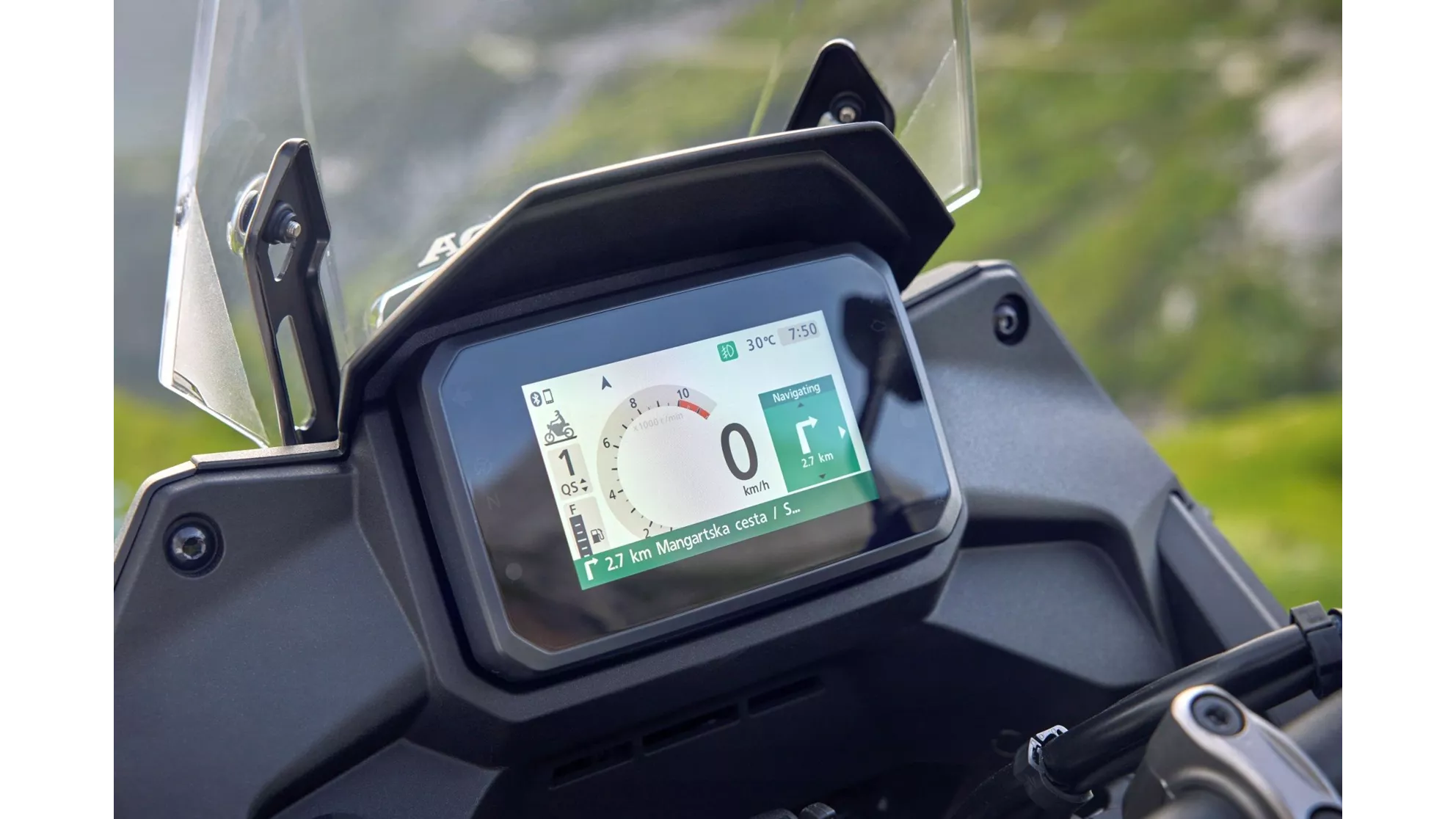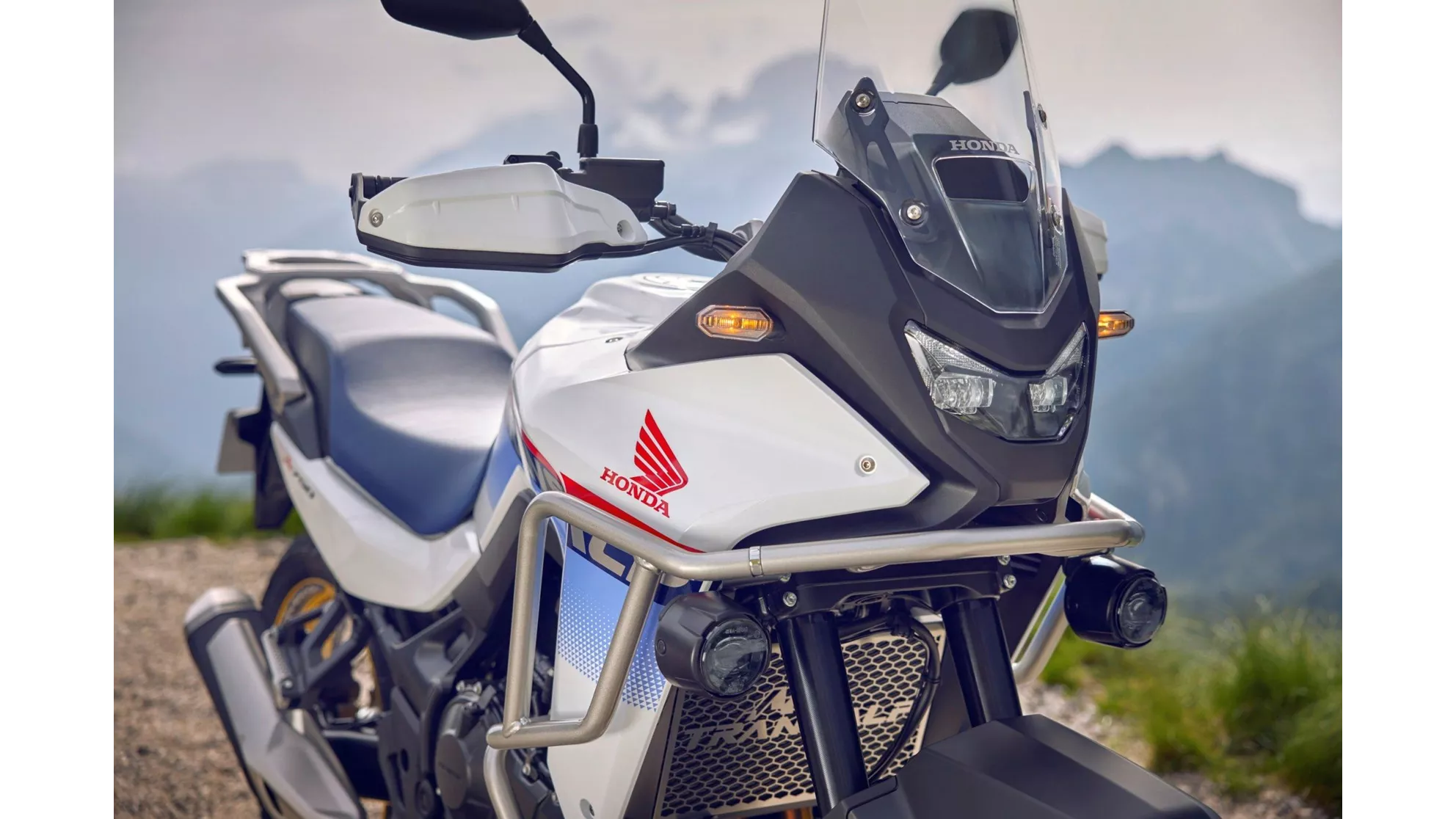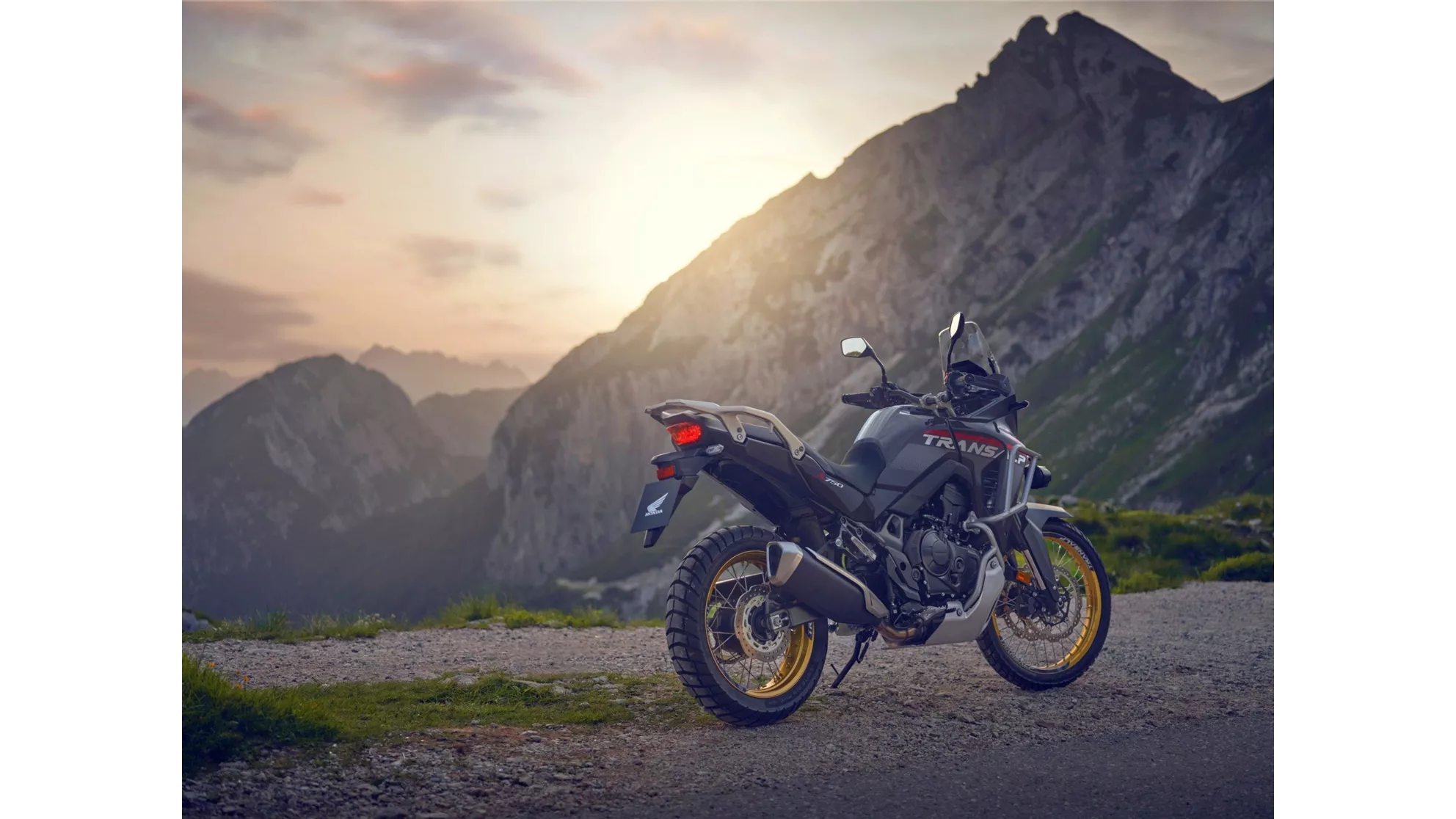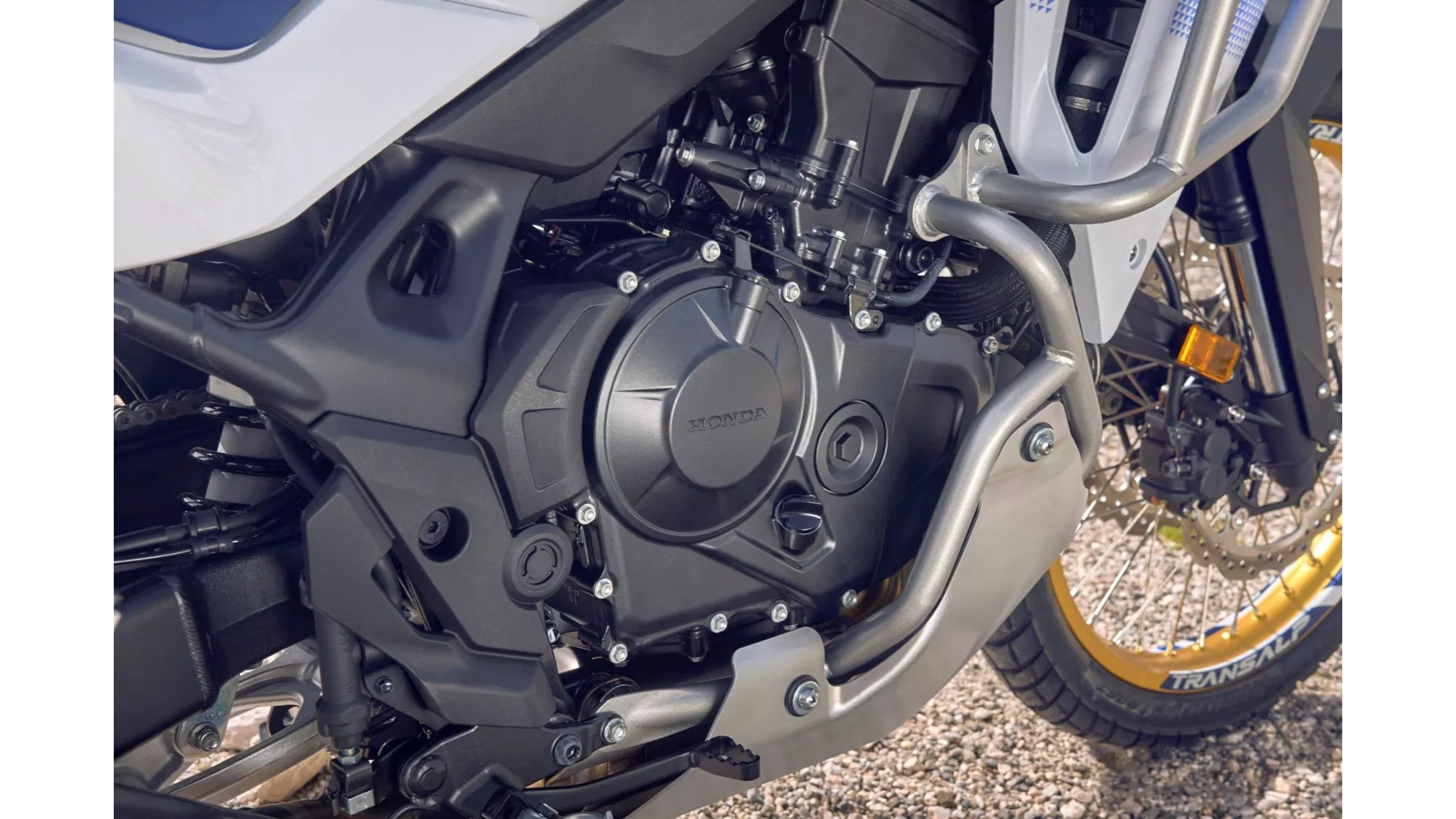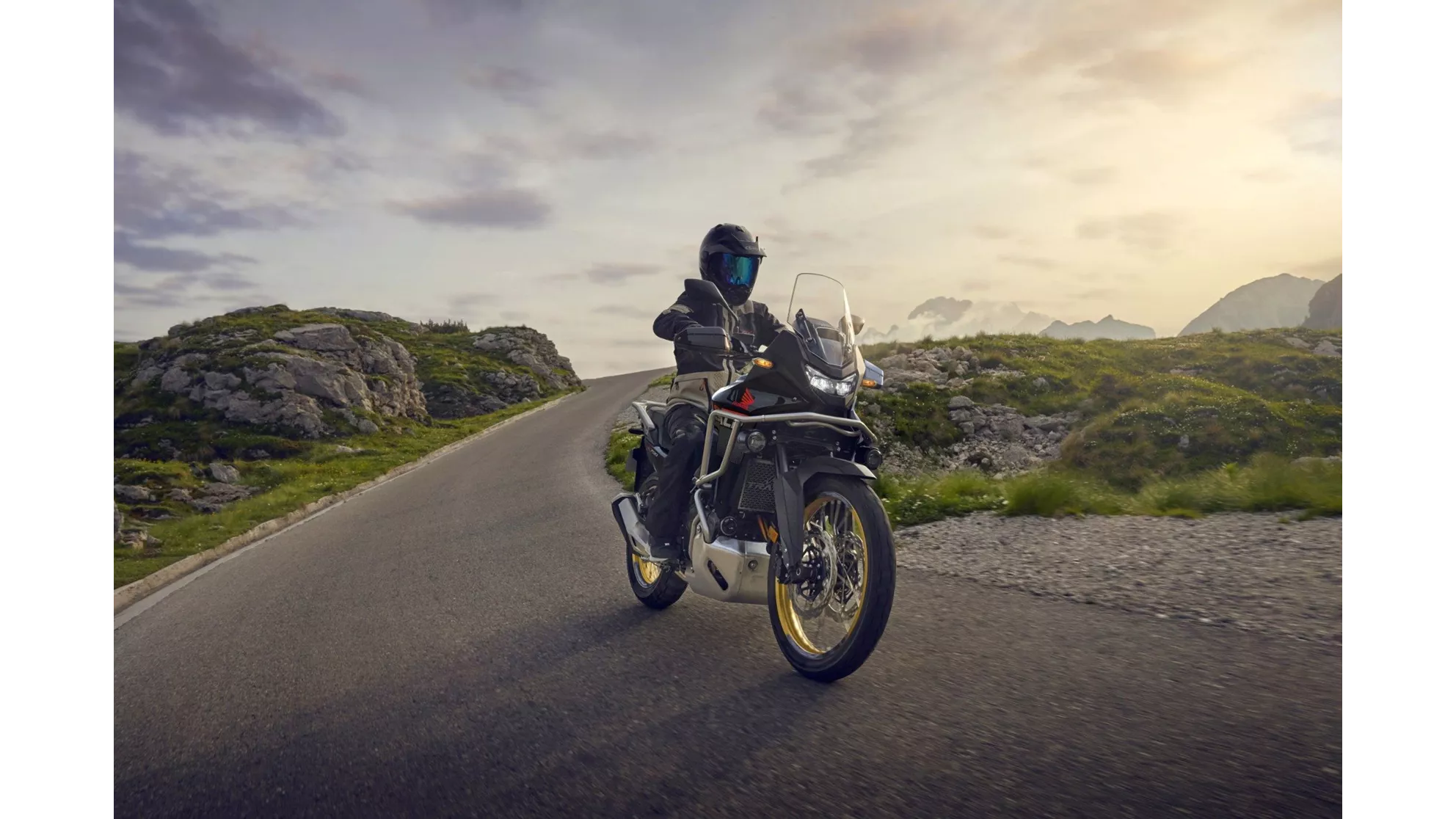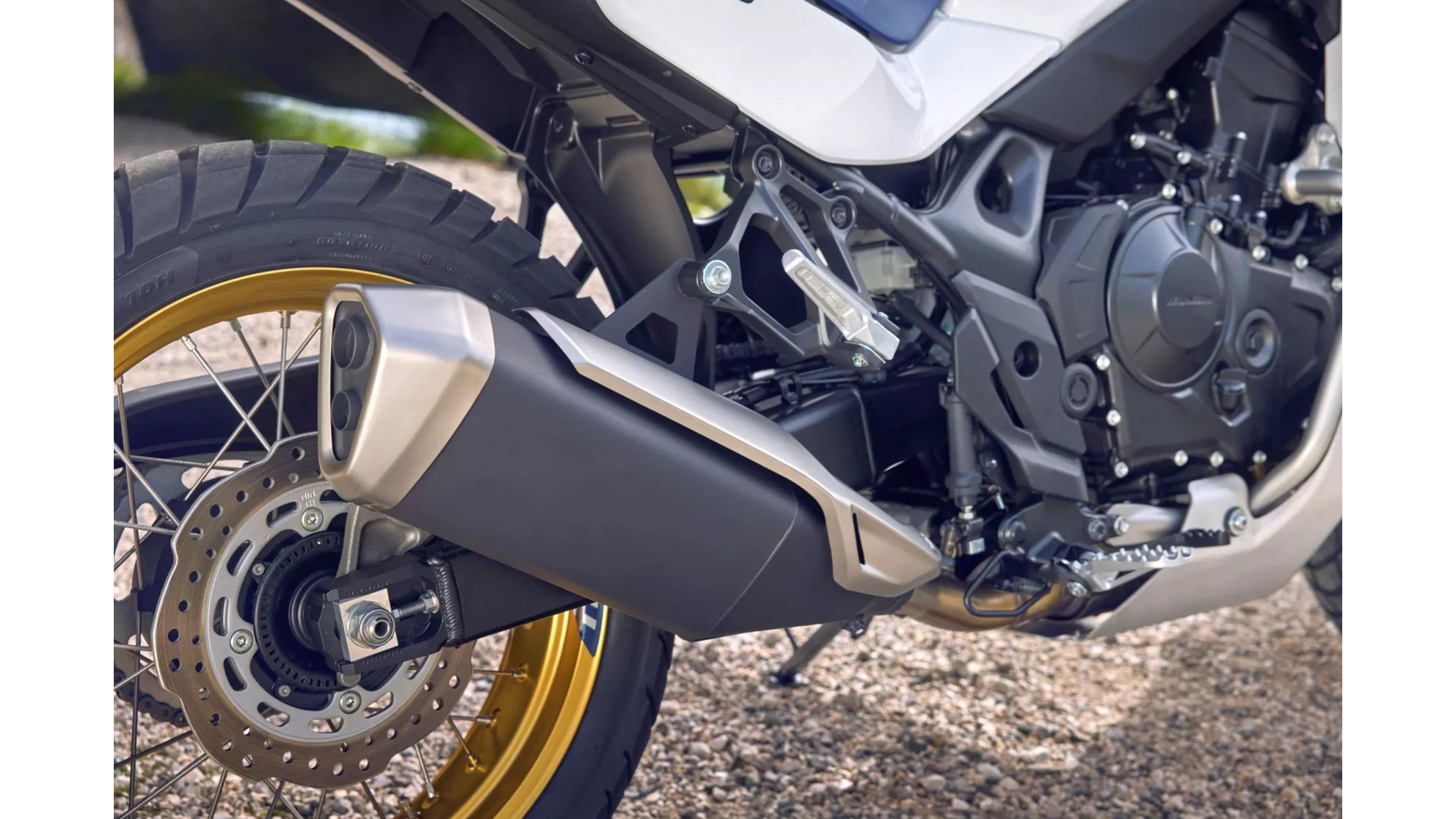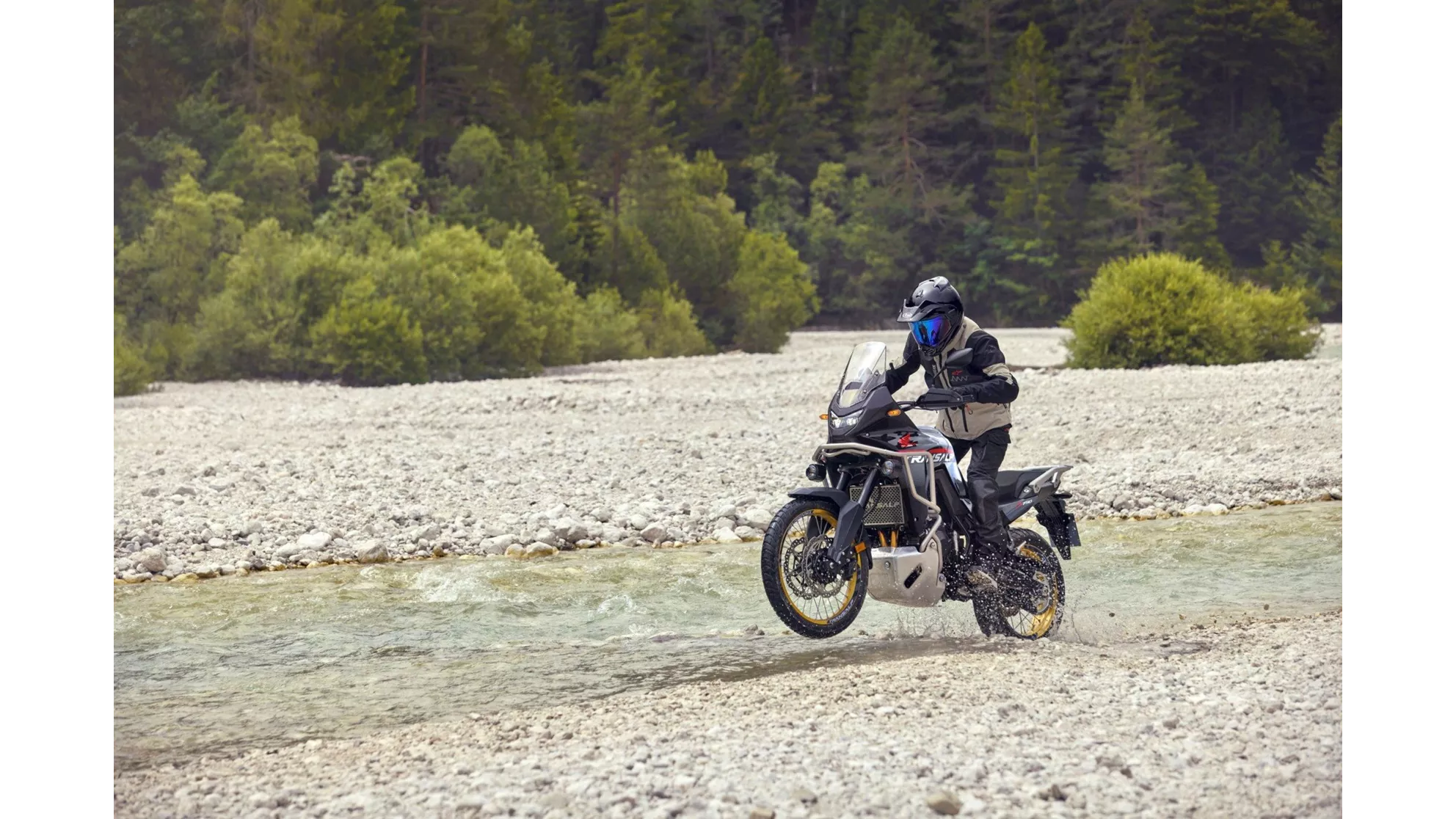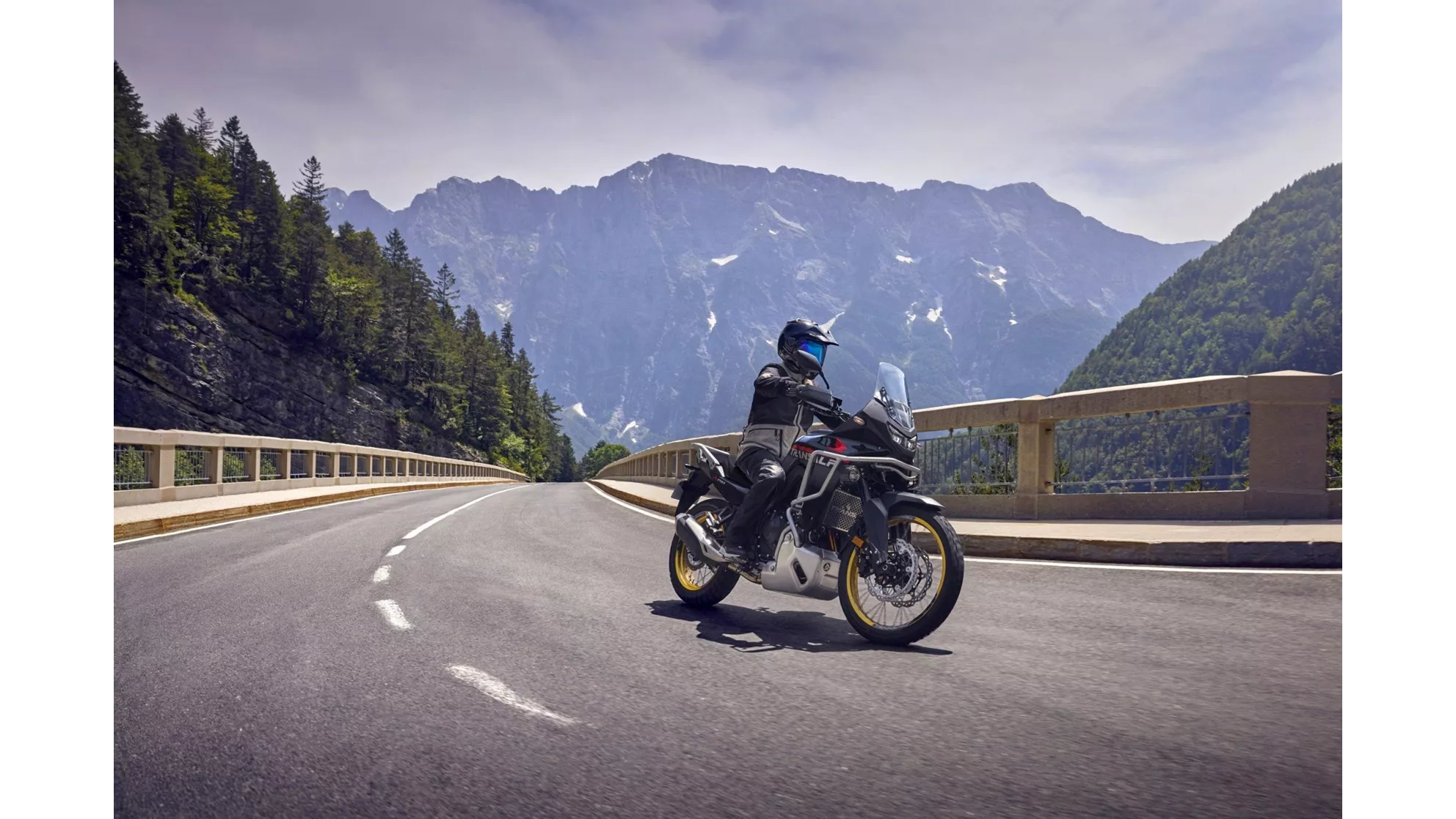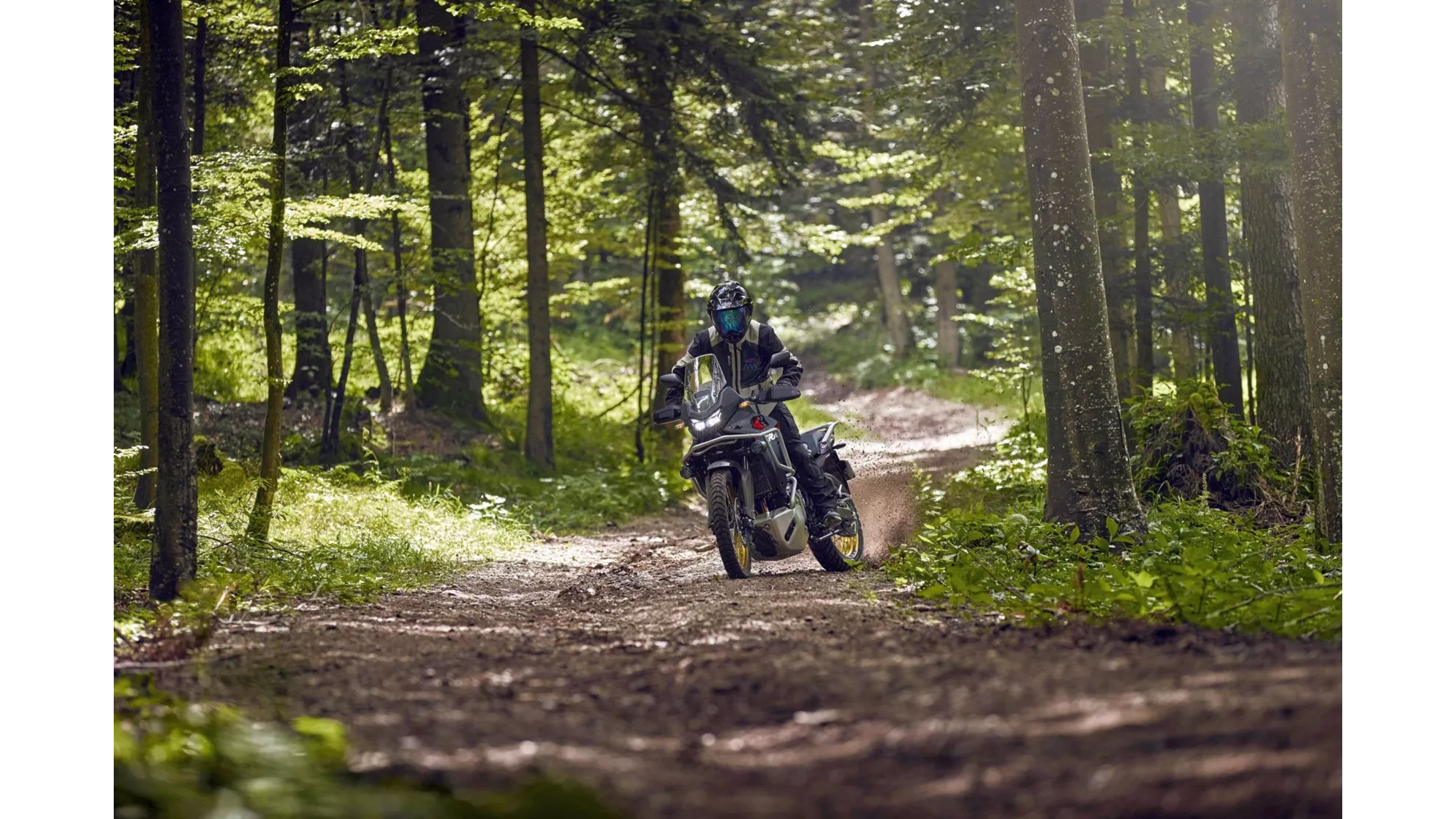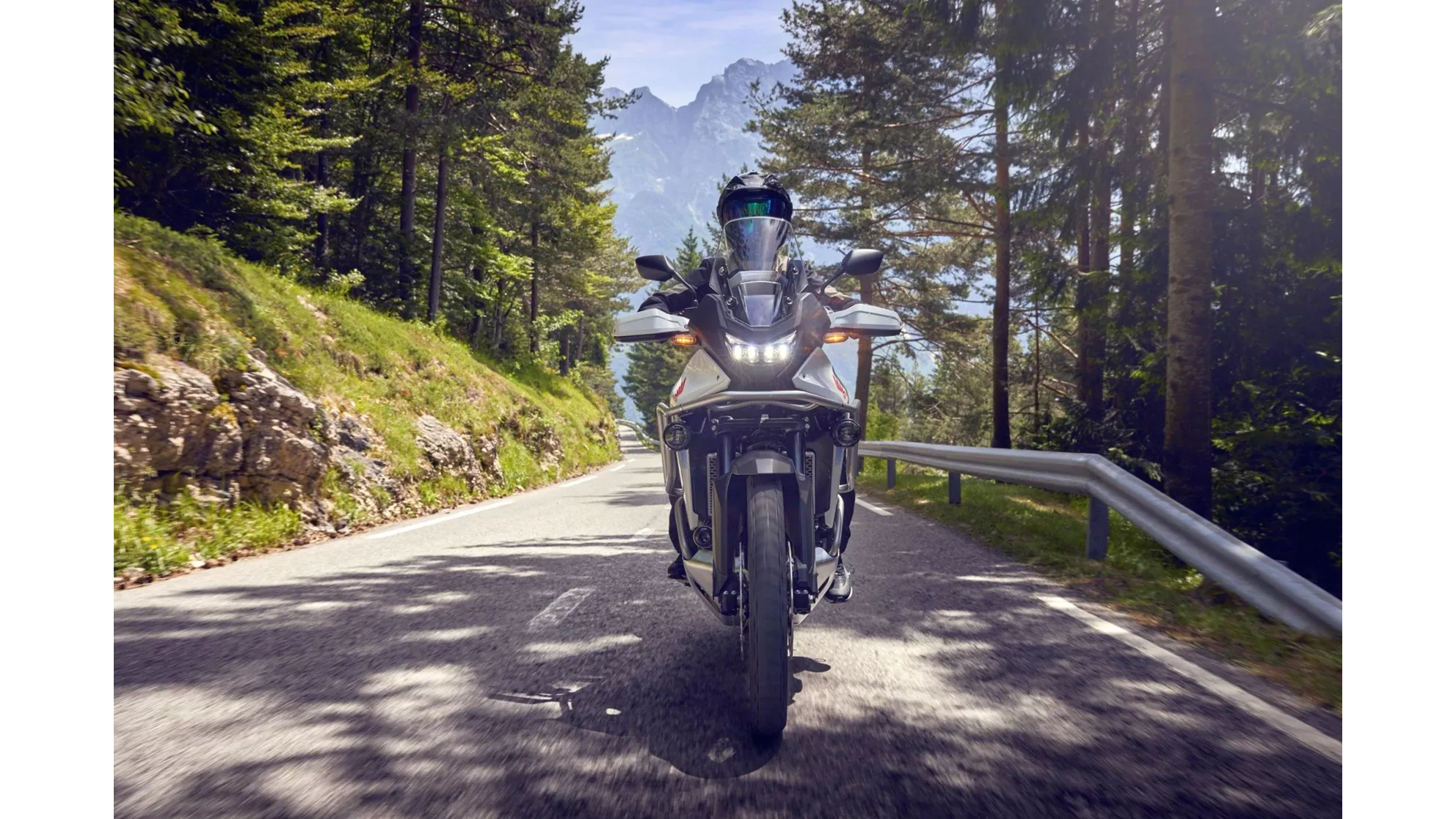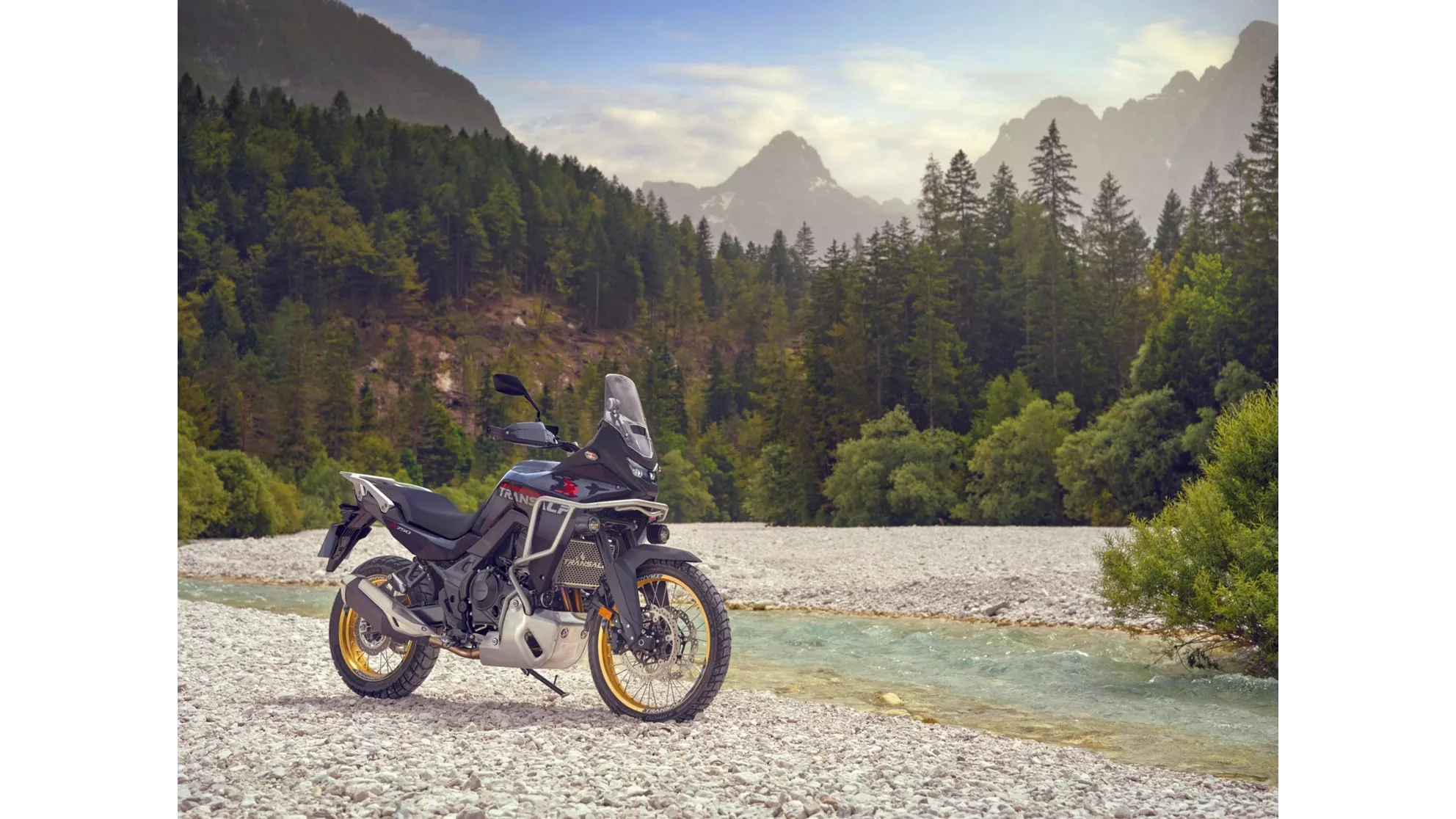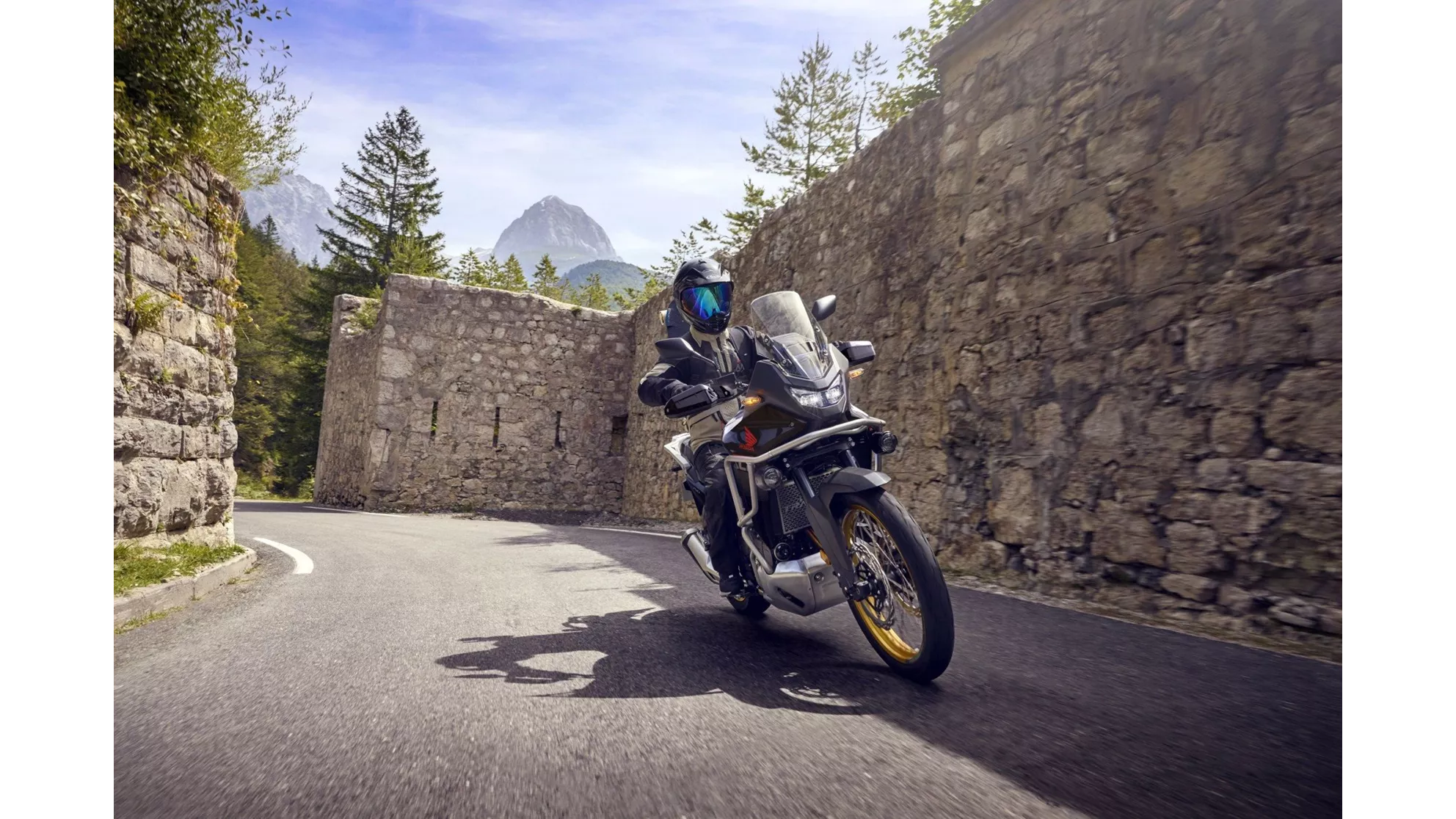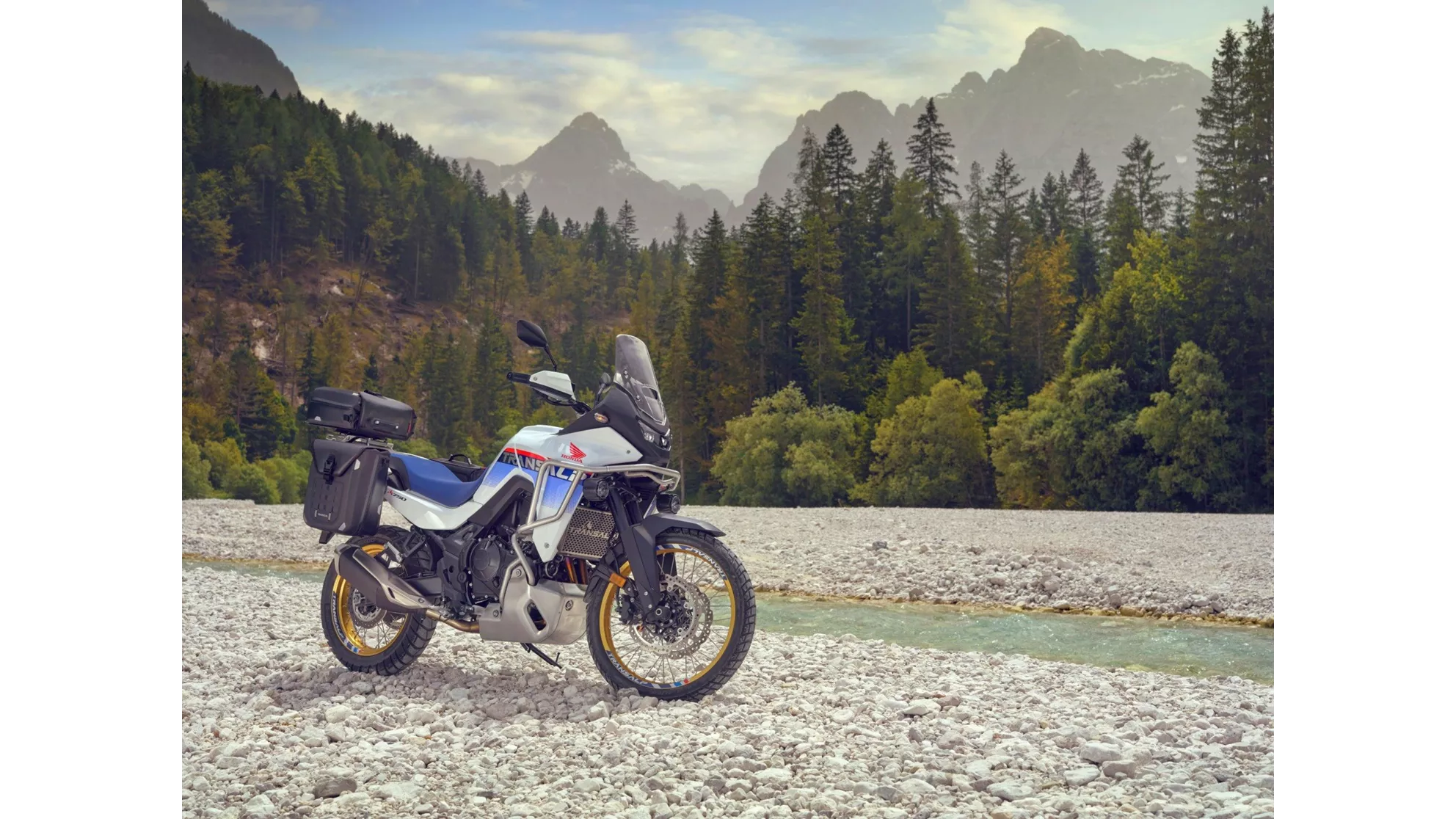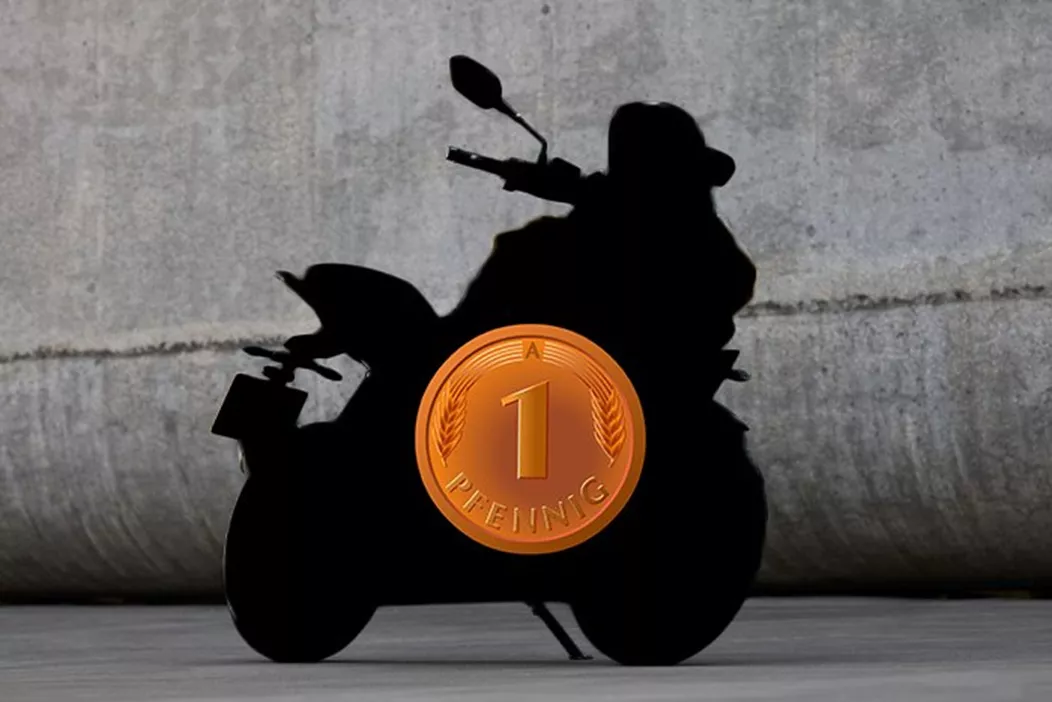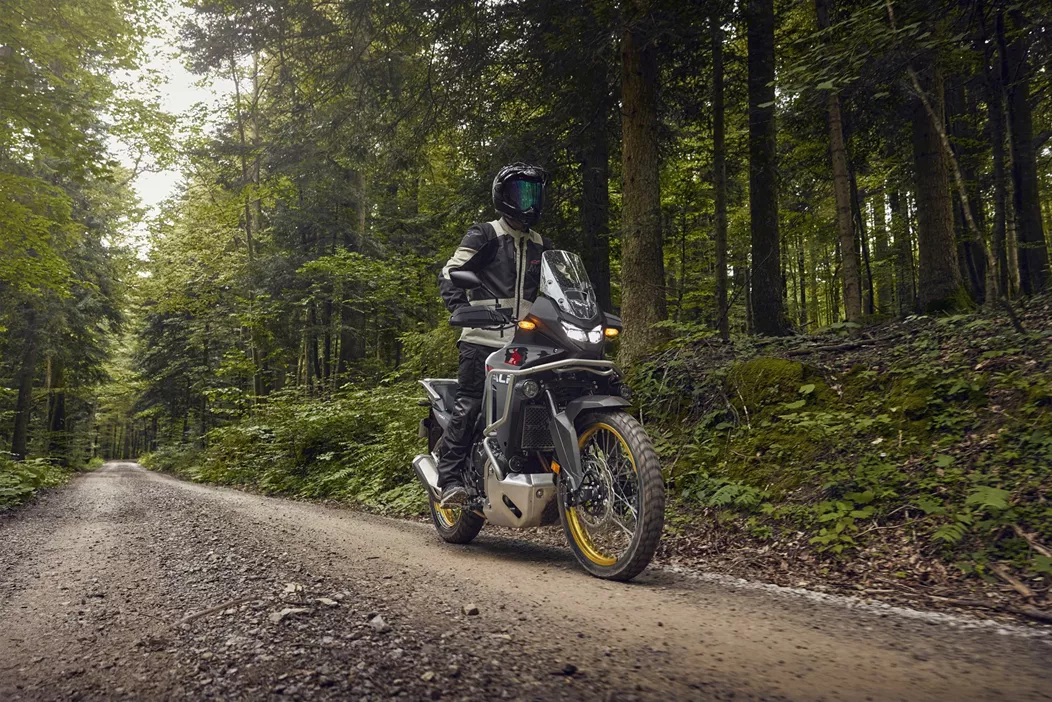I must admit, I was also surprised when I saw the model name XL750 Transalp in the invitation to the presentation in Portugal - it has just hit the market! And now there's already a new one?! Well, Honda skillfully applies the necessary tricks to make the 2025 Transalp 750 appear completely renewed, even though its basic structure remains the same. In the end, the real winner is, fortunately, the customer. The new Transalp looks so different due to the newly designed headlight at the front that it can be recognized (at least from the front) as the brand-new 2025 model. Although Honda itself highlights the resemblance to the larger sister, the CRF1100L Africa Twin, I personally see only a resemblance to the AT with a lot of imagination. In truth, that's okay because the Transalp remains independent and doesn't need to cozy up to the big sister. Along with the new LED headlight, the fairing has also been slightly redesigned, and the windshield is a bit more efficient. In short: The Transalp 750 is not a completely new motorcycle, but it is indeed a better one.
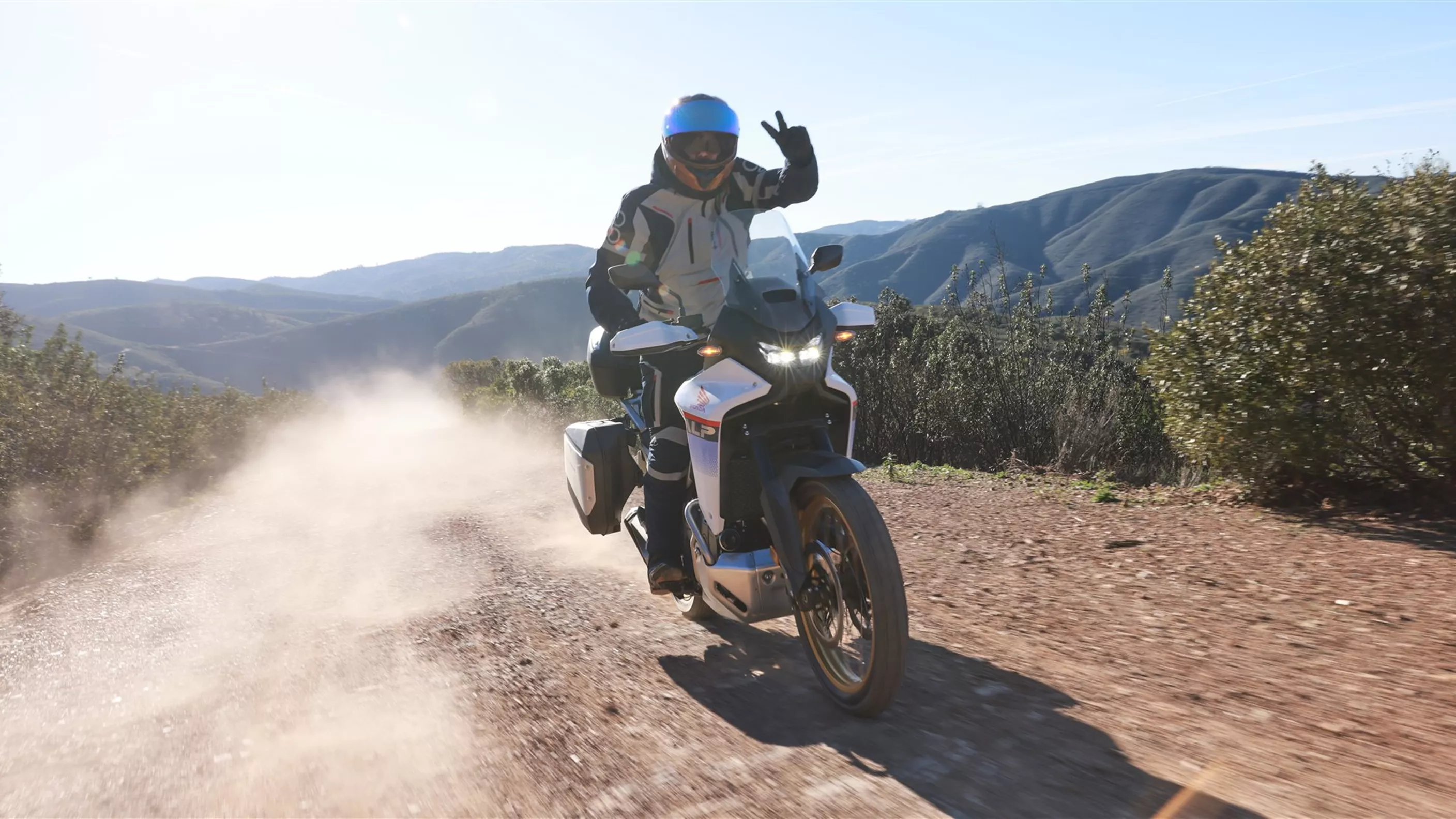
Honda XL750 Transalp 2025 - the first test
How sensible is the update of the universal talent?
Now that's what we call customer service! The two-year cycles for model renewals have long been a thing of the past for the Japanese manufacturers. However, Honda listens to the feedback from customers and testers and is releasing an update of the Transalp 750 in less than two years. So, how good is this all-rounder now? And most importantly, is it worth upgrading to the 2025 Transalp?
&width=72&height=72&bgcolor=rgba_39_42_44_0&mode=crop)
vauli
published on 1/18/2025
The Honda XL750 Transalp remains a truly accessible adventure bike.
That the wind is now better channeled through the fairing, I'll accept, though at just 6 degrees Celsius at the start of the day with the Transalp 750, I honestly wasn't too concerned about getting particularly fresh air. However, under these conditions, it became clear that the Transalp remains a truly user-friendly adventure bike, where you sit at a relatively low seat height of 850 millimeters (optionally with a low seat even just 820 mm) and immediately have everything nicely and well under control. It's also immediately noticeable that the now even more legible 5-inch display and the new 4-way control for the many different parameters stand out. Everything now runs even more intuitively and easily - the Africa Twin, at least in this matter, could take a leaf out of its book!
The Japanese can listen - and then they execute!
Before I delve into the many electronic options like five-level adjustable mappings, four-level adjustable traction control, three-level adjustable engine braking, and two-level adjustable ABS, which honestly were already available in the previous XL750 Transalp, I'll mention right away the one thing Honda absolutely needed and wanted to improve: the suspension setup. Still, only the rear preload is adjustable, which means you rely on the engineers' optimal preset for rebound and compression both front and rear. And one must commend that the Japanese do listen and then implement it.
The overly soft suspension of the original Transalp just doesn't cut it anymore today.
The rear shock absorber has now been, and this is probably the most important, tuned tighter. The fact that the front USD fork was even configured a bit softer surprised me initially, but during the test rides in Portugal, the reasoning behind it was explained to me plausibly: The front did not become spongier, but only minimally softer so that it harmonizes optimally when compressing with the now harder rear. Thus, the rear became somewhat tighter, consequently more precise and predictable, and now fits better with the forgiving front. It seems to me that the engineers wanted to revive the particularly soft suspension of the original Transalp at all costs with the predecessor XL750, expecting people to remember how cushy and comfortable it was 15 years ago and longer. However, today's customers no longer get much out of suspensions purely trimmed for comfort, which unfortunately also exhibit an overly spongy working method. In any case, with the Transalp 750 of the 2025 model year, the technicians have done everything right, especially with the tighter setup at the rear. Even though the roads in Portugal mostly had very good and grippy asphalt, where one could very well mask suspension weaknesses, there were still the occasional unexpected wave or some pothole that none of the testers would have mentioned significantly during the route debriefing. The tighter rear also naturally benefits better off-road capability, although I must honestly say that the few kilometers of gravel road with partly coarser debris, which did not appear suddenly but was predictable, provided too little insight into whether the new suspension is now really decisively better off-road.
A Clear Recommendation - the Honda XL750 Transalp 2025
And with that, I've reached the point where it's about whether switching to the new 2025 model of the Transalp 750 is really worth it. On one hand, absolutely yes! Especially if you were not at all satisfied with the comparatively spongy rear of its predecessor. The decision is easiest for those who are choosing a Transalp 750 for the first time - definitely go for the new 2025 model, as the price is not much higher and you hardly have to pay anything extra for the added value. Honda would really have to drop the price significantly on the 2024 models for the previous year's model to be an alternative. The situation is more challenging for owners of a 2023 or 2024 Transalp who are generally satisfied with their all-rounder and perhaps even prefer its looks. For them, it is most recommended to upgrade or replace the rear shock absorber if it truly doesn't meet their expectations.
The parallel-twin has power, but it suits the Hornet better than the Transalp.
One thing should be clear: The new XL750 Transalp hasn't changed so much in its essence that it would be a completely new model. It remains true to itself in 2025 as well - with all its many advantages but also the small weaknesses. One thing that remained unchanged is the long gearing. Personally, I find the powerful 755 cc parallel-twin engine in the Hornet 750 really agile and incredibly fun to ride. Although an engine that unleashes its proud 92 hp only at 9500 rpm and with 75 Nm at a relatively high 7250 rpm doesn't necessarily deliver the low-end punch you would hope for in a confident twin-cylinder adventure bike, this can be masked by the excellent electronics but not completely negated. It would have been easy to give the 2025 Transalp 750 a slightly shorter gearing. Now, since the new model hasn't become significantly more expensive than its predecessor, one could, of course, invest in a changed gearing. However, this is my personal opinion, as I am a fan of the massive punch of a V-twin - and those parallel-twins that imitate this phenomenon really well with their crankpin offset. The XL750 Transalp plays in the league of sensible adventure bikes between 700 and 800 cc - and the technicians are already getting a lot out of this engine, which is also used in a naked bike.
- How much does a Honda XL750 Transalp cost?
- Here you will find an overview of the price level of new and used motorbikes!
&width=60&height=60&bgcolor=rgba_39_42_44_0&mode=crop)
Honda XL750 Transalp 2025 - Experiences and Expert Review
vauli
The Honda XL750 Transalp has not fundamentally changed in essence with its 2025 revision. It still manages the balancing act between different motorcycle disciplines and shines wherever things don't get too extreme. Its greatest strengths are its low weight and the resulting easy handling. The engine is a truly powerful unit, and the engine management is well-tuned, but the parallel twin could offer a bit more punch from the bottom end. The suspension has now been improved, and the brakes provide a lot of comfort, handling all moderate riding situations with ease. However, relentless cornering or harsh terrain are still not its forte. Yet, the Transalp's mission is not to win races or rallies but to carry everyday riders and long-distance tourers confidently through the world. And it can do that! Only one thing is painful here: the missing cruise control.
More from 1000PS Magazine
Honda XL750 Transalp 2025 - the first test Images
Source: 1000PS



















































